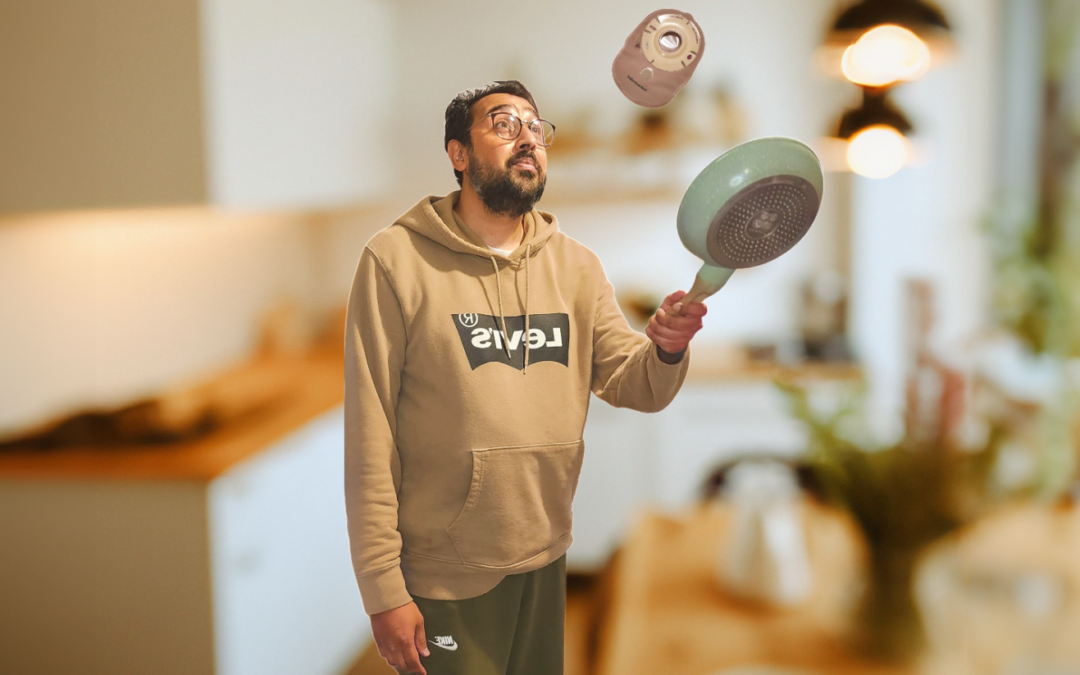Understanding and Managing Pancaking
As someone with a stoma I often face challenges in managing my condition. One common issue that I have encountered regularly was “pancaking,”. No, not the sweet or savoury kind. It’s a frustrating problem that occurs when stool adheres to the stoma, resulting in a blockage. In this article, I’ll explore what pancaking is, the potential causes, and most importantly, tips on how to avoid and manage it effectively.
Understanding Pancaking
Pancaking refers to the occurrence of stool sticking to the stoma instead of falling into the pouch. This condition can be uncomfortable and may lead to leakage, skin irritation, and difficulty emptying the pouch. While pancaking can occur in both colostomies and ileostomies, it is more common in ileostomies due to the liquid consistency of the output. However, as someone with a colostomy, I’ve found it to be a constant pain until I managed to find ways of preventing it, as detailed below.
Causes of Pancaking
There are several factors that contribute to pancaking, the most common causes include:
- High fibre diet: Consuming a diet rich in fibre can increase the likelihood of pancaking. This is because high-fibre foods tend to create bulkier and thicker stool, making it more prone to sticking to the stoma.
- Poor hydration: Inadequate fluid intake can result in firmer stools, making it more likely to pancake.
- Pouching system issues: The type of pouching system used and its fit can also play a huge role in pancaking. If the pouching system is ill-fitting, it may not provide sufficient support, causing the stool to adhere to the stoma.
Preventing Pancaking
Prevention is key when it comes to managing pancaking. By following these tips, you can minimize the occurrence of pancaking: ]
- Diet modifications: Consulting with a healthcare professional or your Stoma Nurse can help you determine if adjustments to your diet are necessary. Reducing high-fibre foods or opting for a low-fibre diet may help prevent pancaking. Your GP may consider a stool softener supplement to help ease your digestion if they feel it necessary.
- Adequate hydration: Drinking enough fluids is crucial in maintaining softer stool consistency. You should aim to consume the recommended daily water intake to prevent pancaking.
- Choosing the right pouching system: Your Stoma Nurse will help find the best product for you and if you encounter any issues you need to make them aware. They should help you by selecting a pouching system that fits securely and comfortably around the stoma. Your Stoma Nurse can order samples of various products for you to trail to find the right pouching system.
Managing Persistent Pancaking
If pancaking persists despite preventive measures, the following strategies can help manage the condition effectively:
- Lubricating the pouch: Applying a lubricant, such as a pouch deodorant or a water-based gel, to the inside of the pouch can help reduce stool adherence and facilitate easier emptying.
- Changing the pouching system more frequently: Increasing the frequency of pouch changes can help minimize the chances of pancaking. This ensures that the pouching system remains clean and prevents stool build-up.
- Trying different pouching system accessories: Utilizing accessories like convex inserts or barrier rings can help create a better seal, reducing the likelihood of pancaking.
Living with a stoma presents unique challenges, and pancaking is one such issue that you may encounter. By understanding the causes of pancaking, implementing preventive measures, and employing effective management strategies, you can improve your quality of life and minimise the impact of this frustrating condition. Regular communication with your Stoma Nurse is vital in ensuring personalised care and support for anyone living with a stoma. You should always consult with your Stoma Nurse before acting on any of the advice above.

